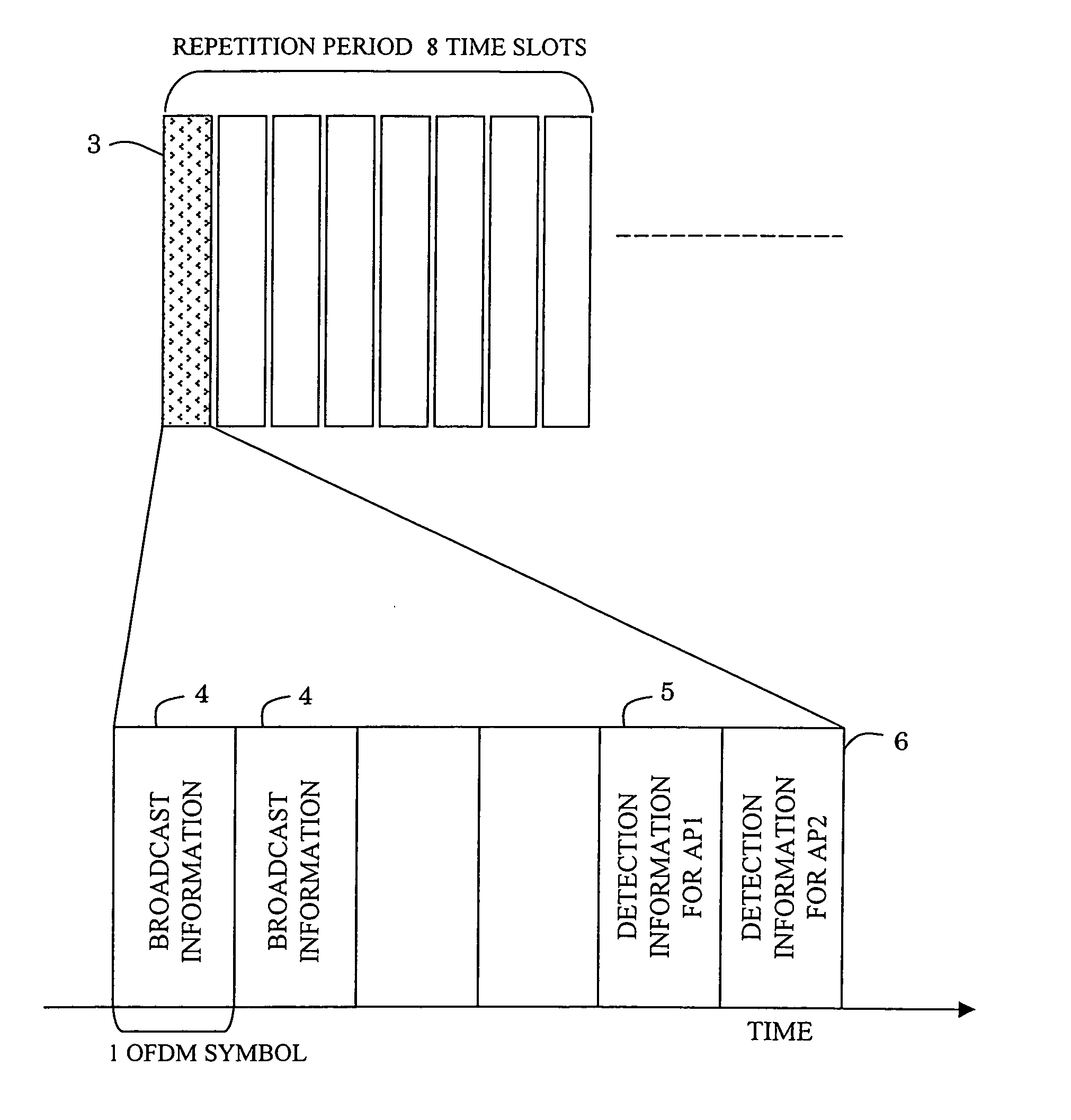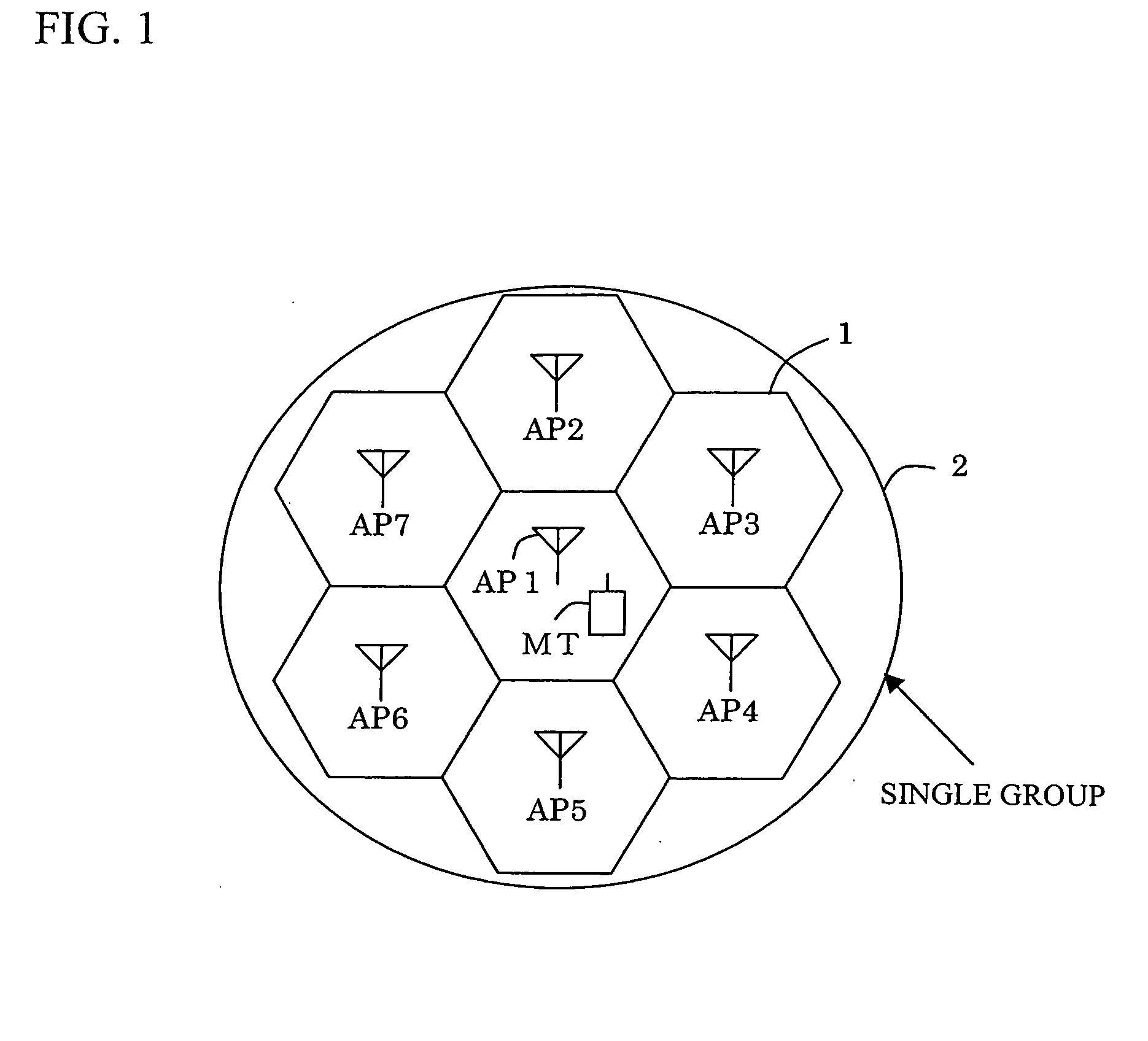Radio communication system
a radio communication system and radio communication technology, applied in the field of digital radio communication systems, can solve the problems of limited service area, limited volume of lines that can be accommodated in a single cell, limited radio transmission range, etc., and achieve the effect of accurate handoff procedur
- Summary
- Abstract
- Description
- Claims
- Application Information
AI Technical Summary
Benefits of technology
Problems solved by technology
Method used
Image
Examples
first embodiment
[0067] A radio communication system according to the invention will be described by referring to the drawings.
[0068] A case will be described in which terminals exist in a cell in which an access point is present. The terminals are connected as communication systems to the network by conducting communications with the access point. For this purpose, a time slot must be determined in which the communications with the access point are conducted.
[0069] In accordance with the invention, a time slot among all of the time slots provided for the access point by the system that is not allocated to any other terminals in the station can be freely allocated for communications with a particular terminal.
[0070] The access point periodically transmits, for example, a detection signal that is used by the terminals in measuring the intensity of a signal from the access point and comparing it with the intensity of an interference signal.
[0071] The detection signal must be transmitted by all of t...
second embodiment
[0101] Hereafter, the radio communication system according to the invention will be described by referring to the drawings.
[0102] The radio communication system of the second embodiment is characterized by a technique relating to the handoff process for the movement of a terminal across cells.
[0103] The handoff process is a procedure allowing for a seamless transfer of access points such that the terminal as it moves can be connected to the radio communication system continuously.
[0104] Referring to FIG. 7, in one example of the handoff process, the intensity of radio waves from the two access points AP (AP1 and AP2) are compared in the terminal MT, and then a request is made for a handoff process. In another, an optimum access point AP is selected between the access points AP based on the intensity of the radio wave from the terminal MT, delay time, and so on, and then instructions are made on the part of the radio communication system based on the selection. Generally, a handoff...
PUM
 Login to View More
Login to View More Abstract
Description
Claims
Application Information
 Login to View More
Login to View More - R&D
- Intellectual Property
- Life Sciences
- Materials
- Tech Scout
- Unparalleled Data Quality
- Higher Quality Content
- 60% Fewer Hallucinations
Browse by: Latest US Patents, China's latest patents, Technical Efficacy Thesaurus, Application Domain, Technology Topic, Popular Technical Reports.
© 2025 PatSnap. All rights reserved.Legal|Privacy policy|Modern Slavery Act Transparency Statement|Sitemap|About US| Contact US: help@patsnap.com



